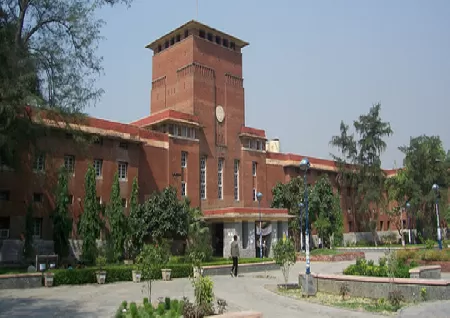Delhi University: Teachers and students complaints

Delhi University (DU) declared that the undergraduate and postgraduate lecture class sizes will stay at 60 and 50, respectively. This year, the size of the tutorial and practical classes will also grow from a small group of 10–12 students to around 20.
But is it the proper move to increase the number of students? While some staff members argue that this was a necessary measure to accommodate students, some students at Delhi University think it may have a negative impact on the standard of instruction provided during tutorial sessions.
The size of undergraduate classrooms in Delhi University's institutions was announced as 60 students for lectures, 30 for tutorials, and 25 for practicals last year. Postgraduate classroom sizes were announced as 50 students for lectures, 25 for tutorials, and 15-20 for practicals.
How is a tutorial different from a lecture?
The Learning Outcomes-based Curriculum Framework (LOCF), which promotes a more comprehensive educational experience for the students, was adopted by Delhi University in 2019. In addition to emphasizing the application of knowledge to real-world situations, LOCF places an emphasis on applying knowledge through fieldwork and laboratory work.
Faculty, students split on decision
Some of the top administrators at Delhi University's institutions think that this law, which limits the number of students allowed for each tutorial, is an excellent and essential development.With this rule, we know that a section should now have 50–60 students, and beyond this, we are unable to hire. Previously, some institutions at Delhi University had 20 students in tutorials while others had 30, but now we know that a section should now have these numbers.
However, students at Delhi University think that an increase in batch size, particularly in tutorial classes, will eventually result in students being reluctant to approach their instructors with questions. The purpose of these tutorial classes is to provide students enough time to sit down with their lecturers, clear their doubts, and engage in more in-depth intellectual conversations. But how will that be achievable with such a large class size? Students will begin to be reluctant to ask queries. It negates the fundamental purpose of these meetings, said Sneha Dey, a Miranda House student majoring in politic
N P Ashley, an assistant professor at Delhi University's St Stephen's College, said: "I like smaller groups because students pay attention to one another. For instance, if I speak for five minutes and each student speaks for two to three minutes in a tutorial with eight participants, it turns into collaborative learning and everyone participates, which in turn helps them listen, process, and improve. However, because we cannot ask so many students to speak individually under the new rules, this will become a teacher-centric activity and resemble a lecture. I taught small tutorial groups last year, and I knew every single one of them personally, but perhaps not the kids I have lectured to," he explains.
In addition, he said that Delhi University's tutorial structure was sound and didn't need to be changed. “They (Delhi University) increased the number of courses, and there is so much more of continuous (internal) assessment now that students are forever writing exams. I don’t want any conversation with the student to be something that they have to be graded on because students will not make mistakes and grow then,
"This issue wouldn't have arisen if they (DU) hadn't raised the number of courses and modified the rule for the hiring of professors (from AdHoc to Guest lecturers). Even by rankings, this was the top undergraduate program in the nation, he said.
Related queries to this article
- delhi
- university
- teachers
- students
- complaints
Read more articles and stories on InstaSity Education.


